San Joaquin County
Species / Location
California Department of Fish and Wildlife (CDFW) is investigating drought effects on dissolved oxygen in the Stanislaus and San Joaquin rivers, which can impact Fall-Run Chinook salmon, a federally listed species of concern, and steelhead, a federally listed threatened species (Figures 1 and 2).
 Figure 1. Chinook Salmon (top) and steelhead (bottom). (CDFW photos G. Davis (top), and D. Thatcher (bottom))
Figure 1. Chinook Salmon (top) and steelhead (bottom). (CDFW photos G. Davis (top), and D. Thatcher (bottom))
 Figure 2. Locations of river flow gauges used to monitor dissolved oxygen in San Joaquin and Stanislaus rivers. (click/tap to enlarge)
Figure 2. Locations of river flow gauges used to monitor dissolved oxygen in San Joaquin and Stanislaus rivers. (click/tap to enlarge)
Need for Drought Stressor Monitoring
While organisms can adapt to some variation in the levels of dissolved oxygen, low levels can result in both lethal and sub-lethal effects on fish, such as slower growth (Figure 3). When rivers have high and relatively stable levels of dissolved oxygen, they are usually capable of supporting many aquatic organisms and creating a healthy ecosystem. Drought, however, can have several negative effects on dissolved oxygen levels and water quality. Lower river water flows can result in reduced mixing of the water column, leading to lower dissolved oxygen levels. Additionally, lower flows and shallow depths result in quicker warming by the sun and warm water holds less dissolved oxygen than cold water. Furthermore, lower water flows encourage plant and algae blooms, which in turn further deplete dissolved oxygen levels (Figure 4).
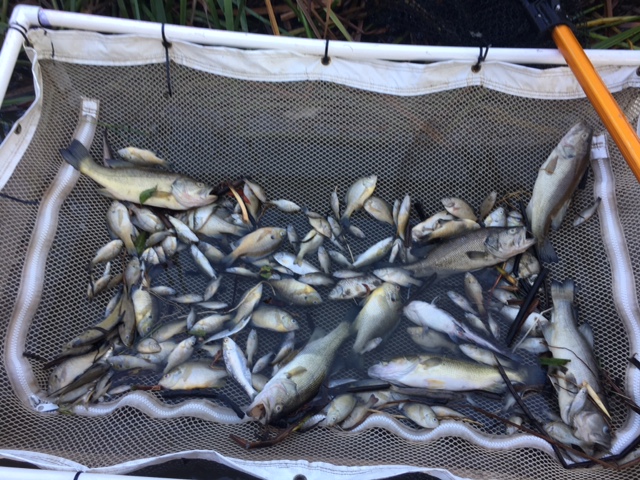 Figure 3. Fish kill resulting from low dissolved oxygen levels at Salt Slough, San Joaquin River, Merced County on November 7, 2016. (US Bureau of Reclamation photo by D. Portz)
Figure 3. Fish kill resulting from low dissolved oxygen levels at Salt Slough, San Joaquin River, Merced County on November 7, 2016. (US Bureau of Reclamation photo by D. Portz)
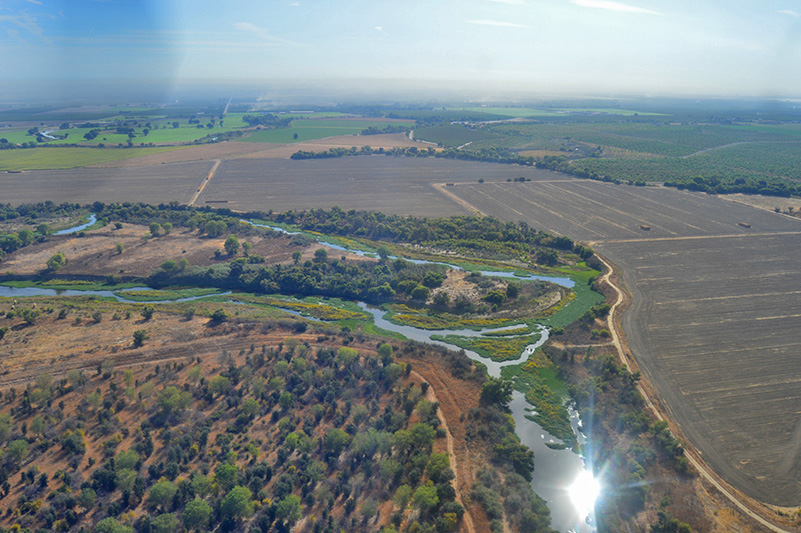 Figure 4. Water hyacinth on the San Joaquin River at the confluence of the Tuolumne River, September 9, 2015. Plant growth can reduce dissolved oxygen levels. (CDFW photo G. Murphey)
Figure 4. Water hyacinth on the San Joaquin River at the confluence of the Tuolumne River, September 9, 2015. Plant growth can reduce dissolved oxygen levels. (CDFW photo G. Murphey)
While some fish species can tolerate wide variations in dissolved oxygen levels, other fish species have relatively narrow dissolved oxygen tolerances. Salmon and steelhead found in the lower San Joaquin River Basin are cold water fish that need high levels of dissolved oxygen.
The U.S Environmental Protection Agency (1986) reviewed dissolved oxygen research to construct a list of minimum dissolved oxygen criteria for salmon and steelhead in all life stages. General dissolved oxygen recommendations range from minimums of 8 mg/L to prevent sub-lethal impacts to 3 mg/L to avoid mortality. For embryo and larval stages, dissolved oxygen requirements are increased by 3 mg/L for each recommendation (11 mg/L and 6 mg/L, respectively) to ensure that adequate dissolved oxygen levels are achieved within the gravel of redds (nests).
Currently, the only dissolved oxygen requirement in the Lower San Joaquin Basin is focused on the Stanislaus River at Ripon. This requirement is a year-round dissolved oxygen minimum of 7 mg/L, which was introduced in an effort to protect salmon, steelhead, and trout in the river.
Drought Monitoring Efforts
CDFW Environmental Scientists from the San Joaquin Tributaries Anadromous Fish Program studied how drought may be impacting dissolved oxygen levels using monitoring data from the California Data Exchange for 5 locations on the Lower San Joaquin River and one location at Ripon on the Stanislaus River, a tributary of the Lower San Joaquin River (Figure 5).
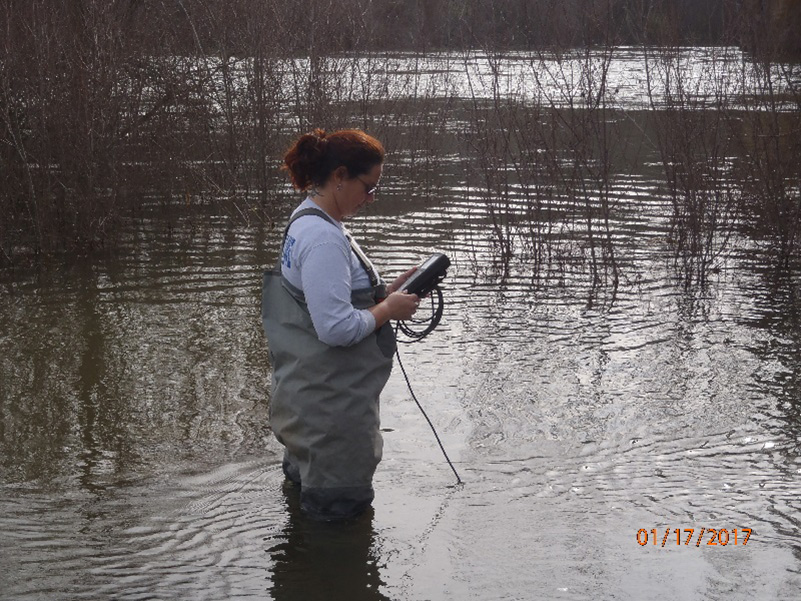 Figure 5. CDFW scientist monitors dissolved oxygen in the Tuolumne River, Stanislaus County. (CDFW photo S. Schubert)
Figure 5. CDFW scientist monitors dissolved oxygen in the Tuolumne River, Stanislaus County. (CDFW photo S. Schubert)
Findings
CDFW compared the amount of dissolved oxygen available before and during the drought (2011 and 2015, respectively) in the San Joaquin River at Vernalis (river mile 73) and the Stanislaus River at Ripon (river mile 16). At both stations, dissolved oxygen concentrations were generally lower during 2015, a drought year, compared to 2011, a non-drought year. At Vernalis, dissolved oxygen levels fluctuated widely during the late winter and early summer of 2015 when compared 2011. During the late summer and fall of 2015, dissolved oxygen was consistently lower than in 2011, with June to November averages of 7.7 mg/L and 8.9 mg/L, respectively (Figure 6). Similar trends were found at Ripon on the Stanislaus River, although the fluctuations of dissolved oxygen in early 2015 were not as strong (Figure 7). Conversely, the period of lower dissolved oxygen began earlier in the year at Ripon than at Vernalis, with a May to November average of 9.3 mg/L in 2011 and 8.2 mg/L in 2015.
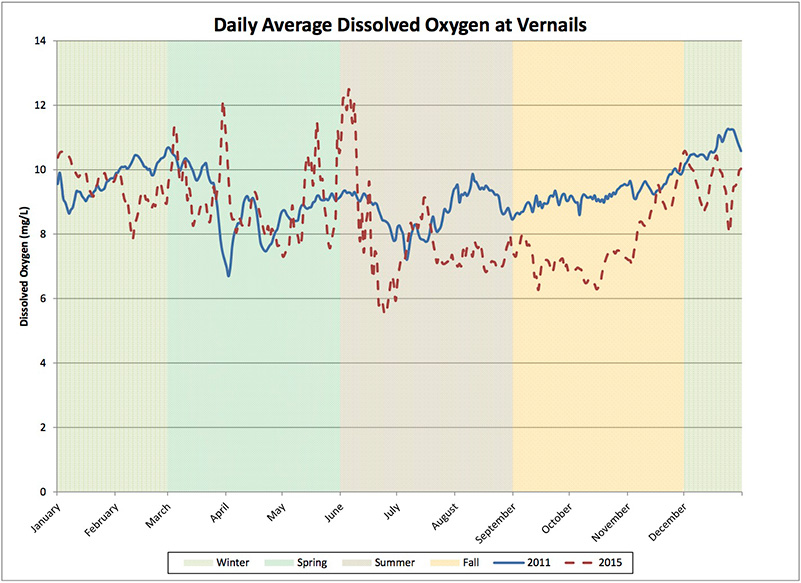 Figure 6. Daily dissolved oxygen levels at the Vernails monitoring station on the San Joaquin River during a drought year (2015) and a non-drought year (2011).
Figure 6. Daily dissolved oxygen levels at the Vernails monitoring station on the San Joaquin River during a drought year (2015) and a non-drought year (2011).
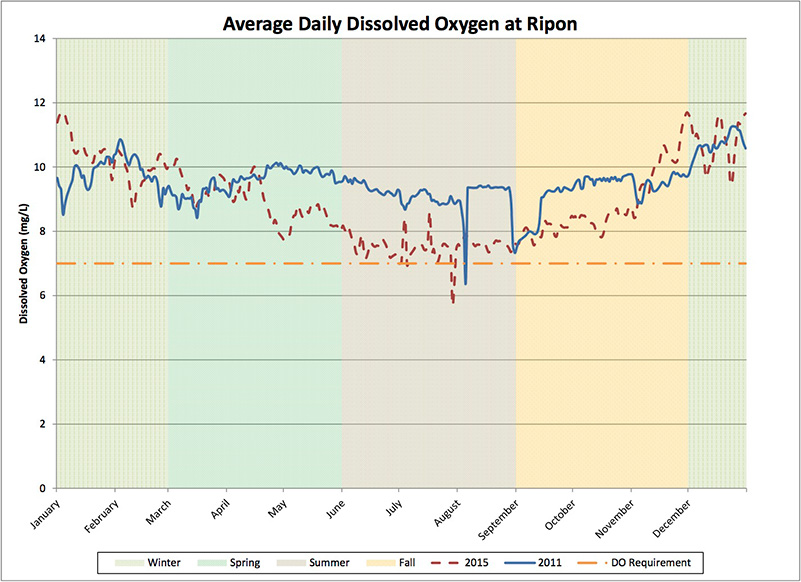 Figure 7. Daily dissolved oxygen levels at the Ripon monitoring station on the Stanislaus River during a drought year (2015) and a non-drought year (2011).
Figure 7. Daily dissolved oxygen levels at the Ripon monitoring station on the Stanislaus River during a drought year (2015) and a non-drought year (2011).
Lower fall dissolved oxygen levels in 2015 cause concern for the fall-run Chinook Salmon population that migrates from the ocean into the Stanislaus River during October and November to return to spawning grounds. Very low dissolved oxygen levels (less than 4.2 mg/L) can block adult salmon migration (Hallock et al 1970). Fortunately, dissolved oxygen readings at Vernalis and Ripon were consistently higher than such levels. However, CDFW is not currently able to determine the effects of drought on dissolved oxygen concentrations in the Tuolumne and Merced Rivers, the other tributaries of the Lower San Joaquin River due to a lack of additional monitoring locations.
Future Efforts
In an effort to generate a more complete dissolved oxygen dataset, CDFW will begin a dissolved oxygen monitoring pilot program. Staff will perform “spot checks” on the three tributaries of the Lower San Joaquin River. Using these spot checks, CDFW will better track the overall seasonal trends in dissolved oxygen. In addition, CDFW will deploy a series of dissolved oxygen loggers to gain a better understanding of daily dissolved oxygen fluctuations. These efforts will focus on river junctions, runoff events, and other areas of importance.
In addition to data collected by CDFW, an expansion of dissolved oxygen monitoring at California Data Exchange locations would greatly improve knowledge of the ongoing status and trends in the Lower San Joaquin Basin. Developing monitoring stations on the Tuolumne and Merced rivers would enable CDFW to better understand how drought has impacted dissolved oxygen in those rivers.
References
CDFW